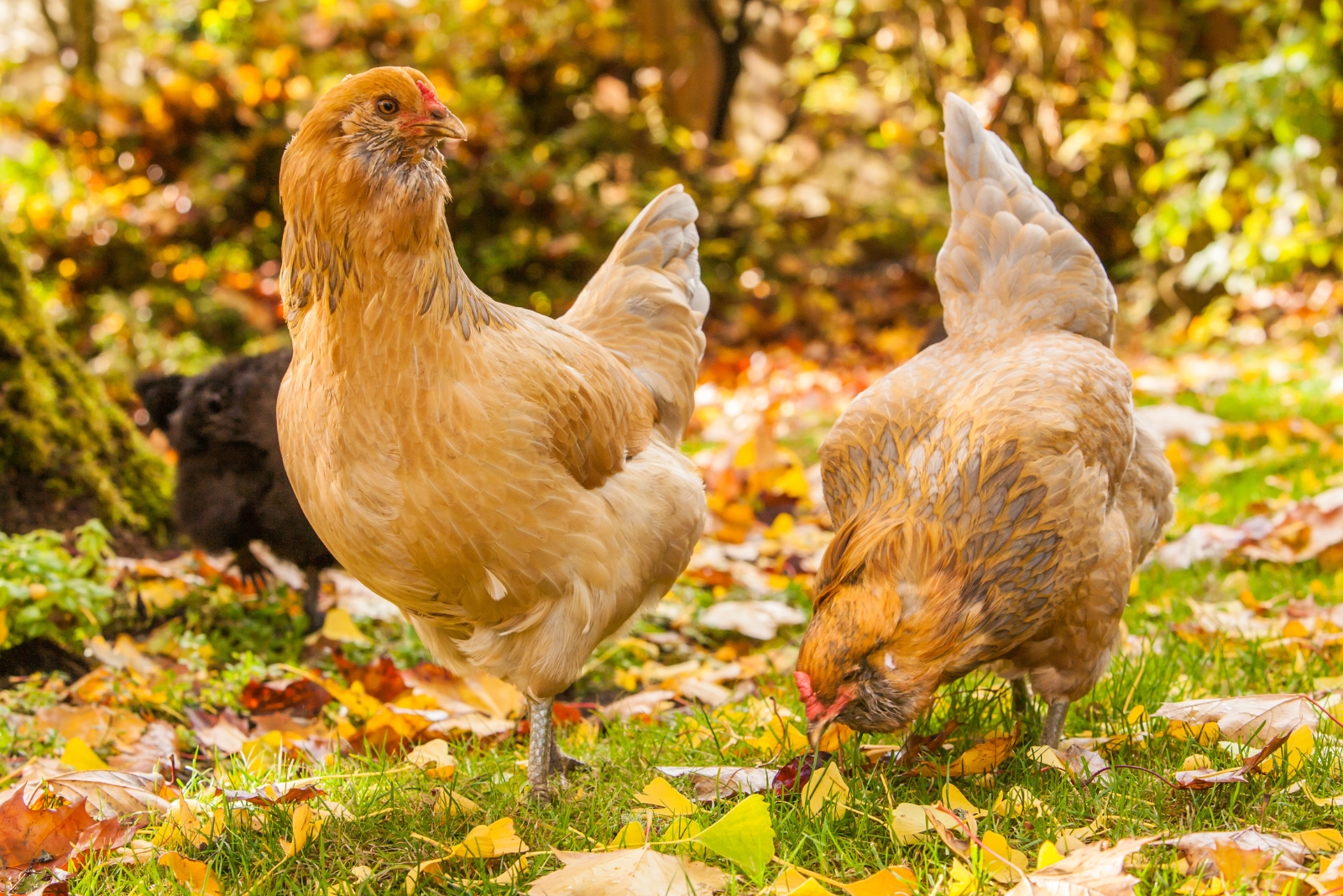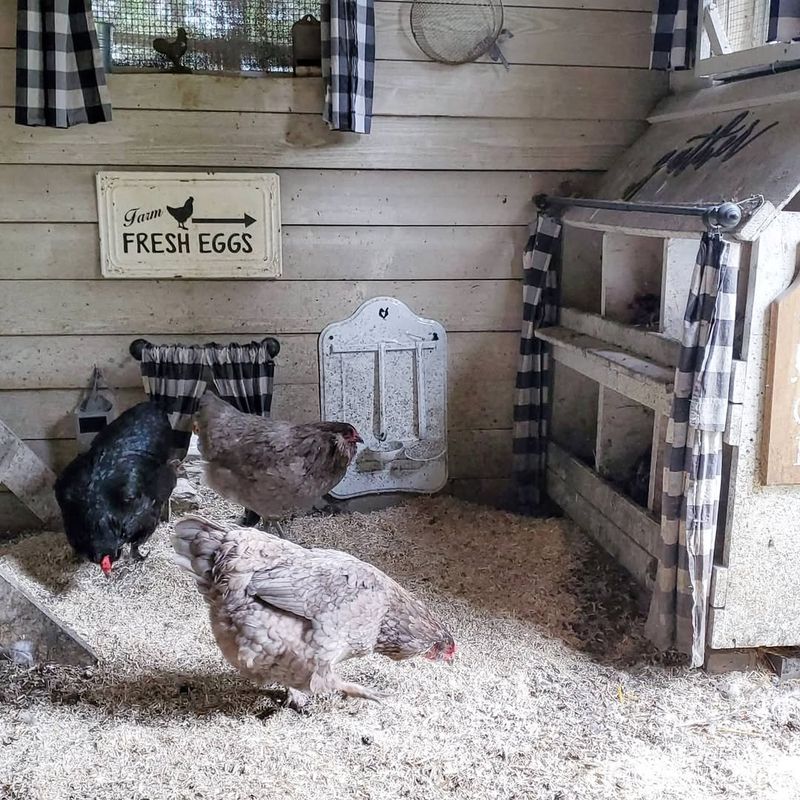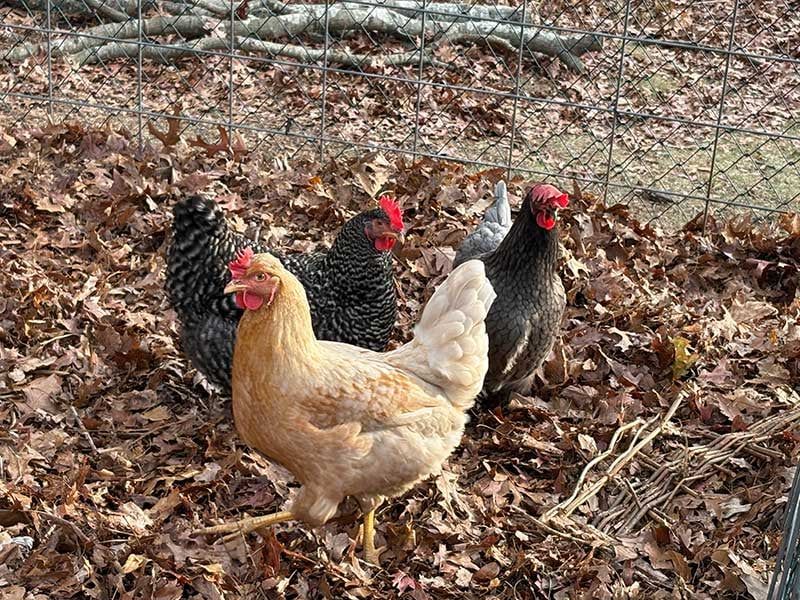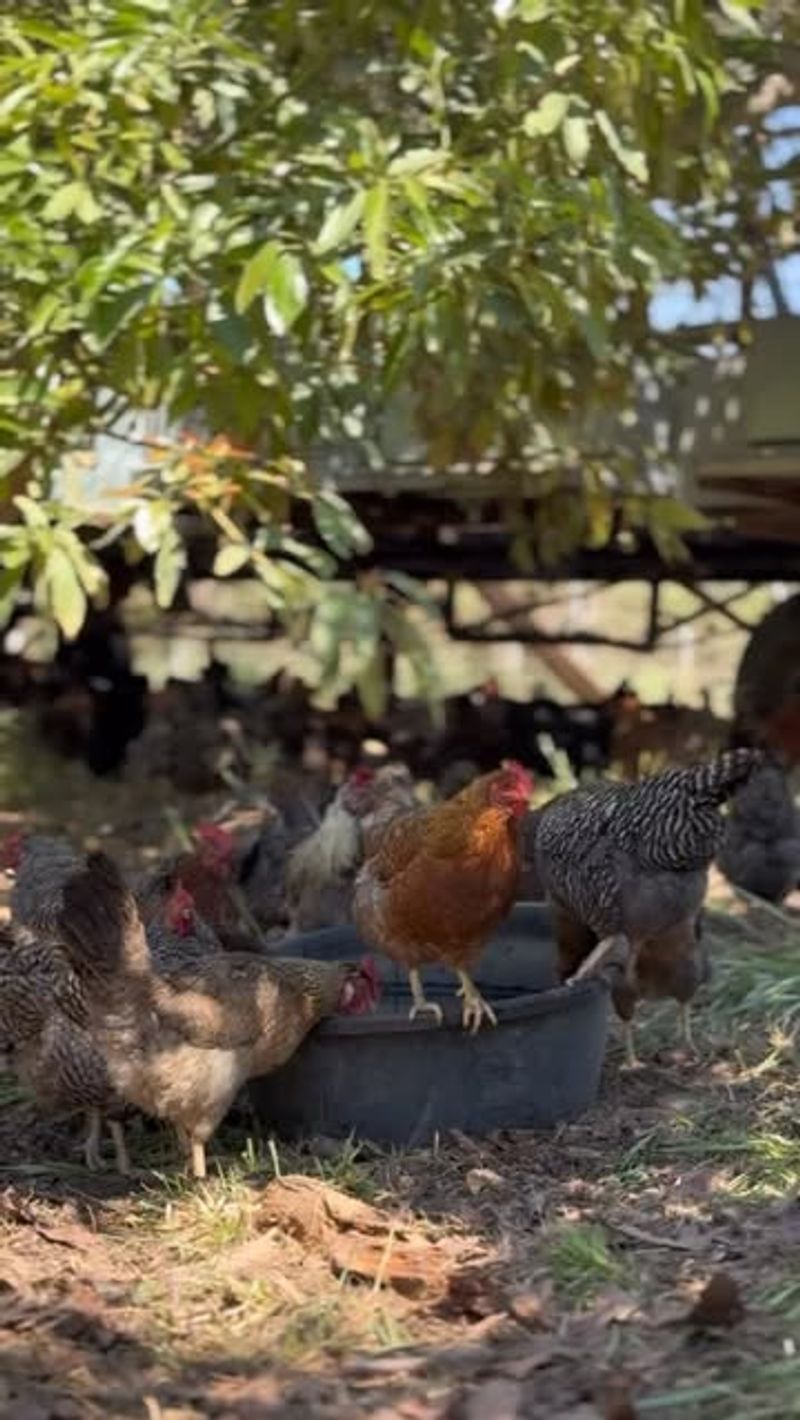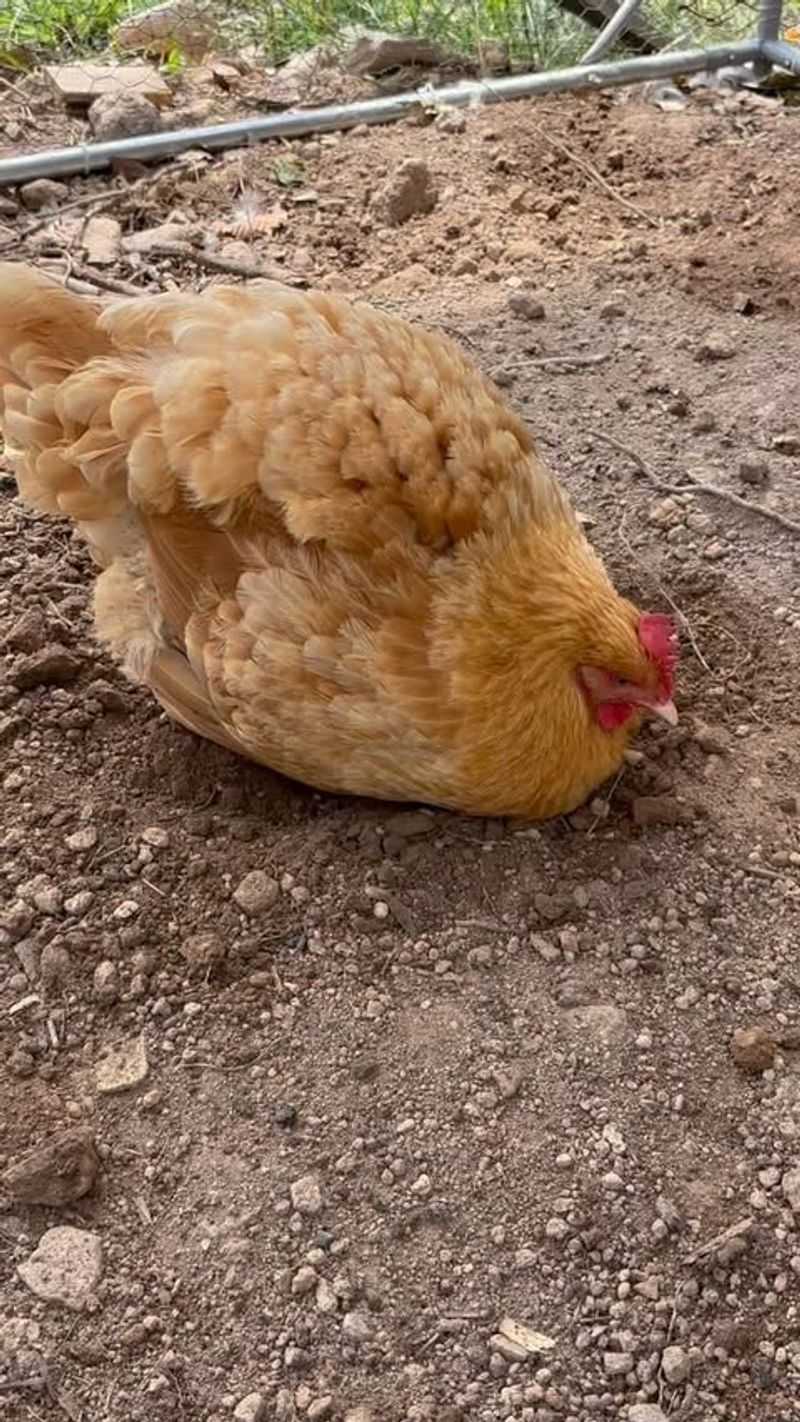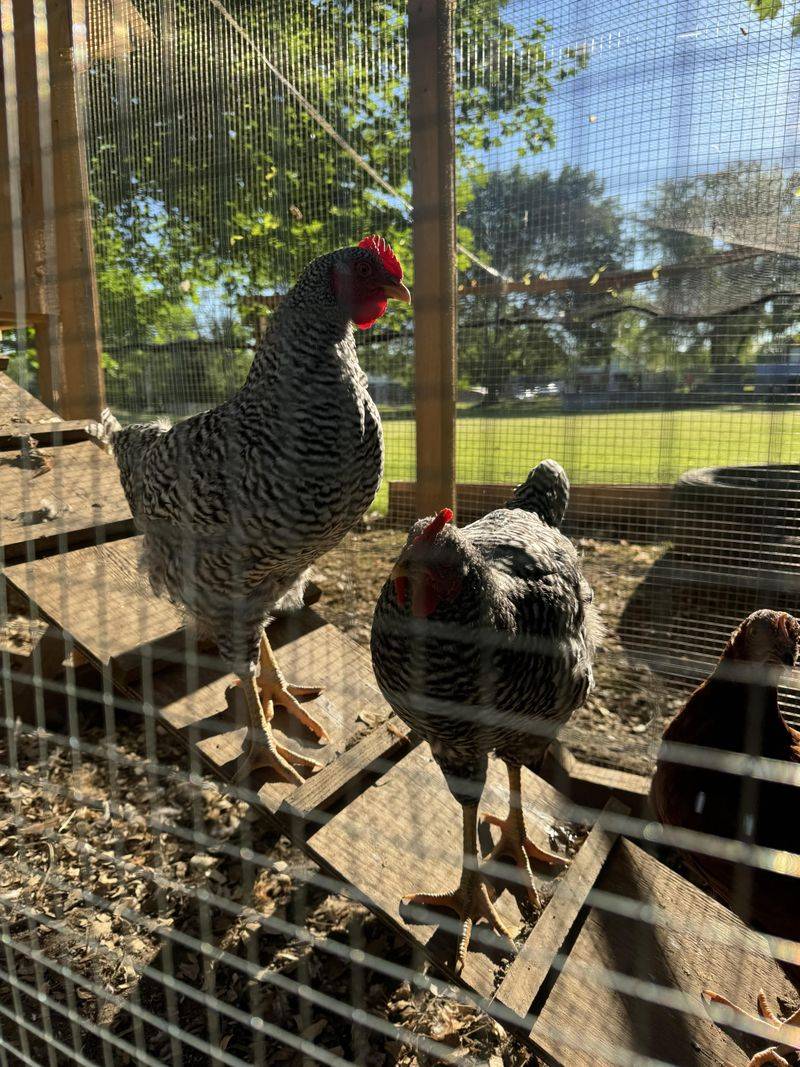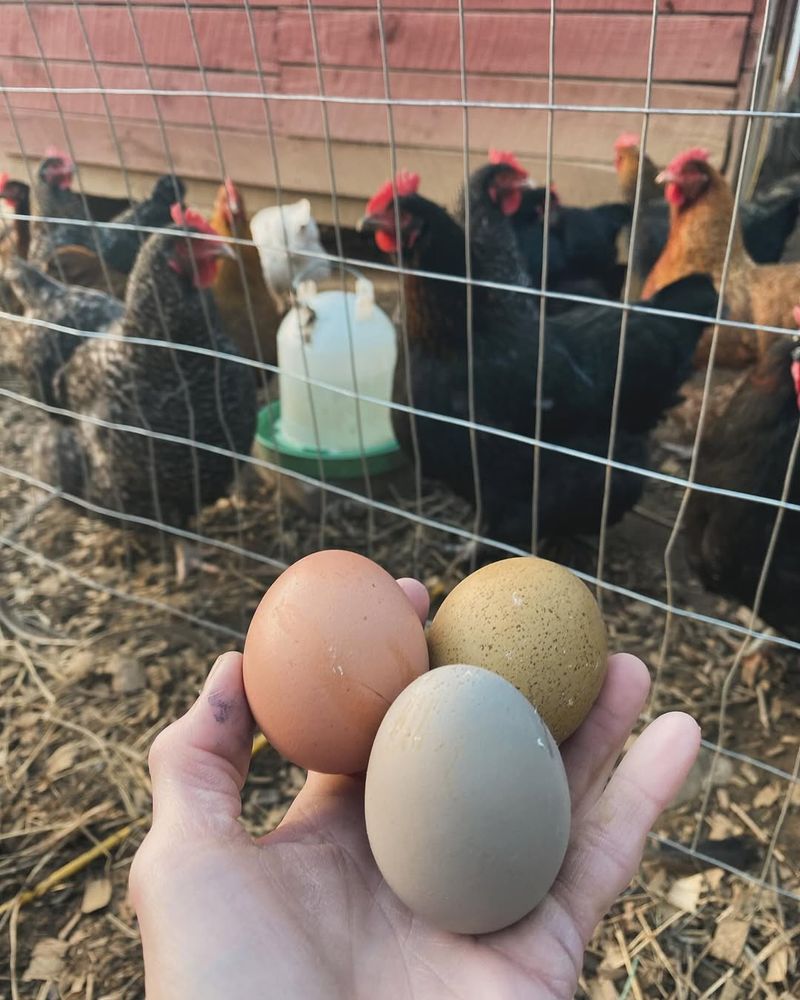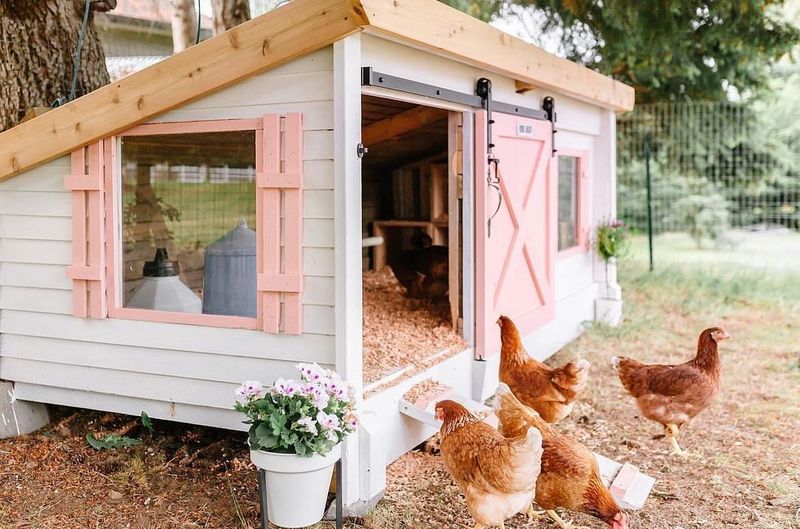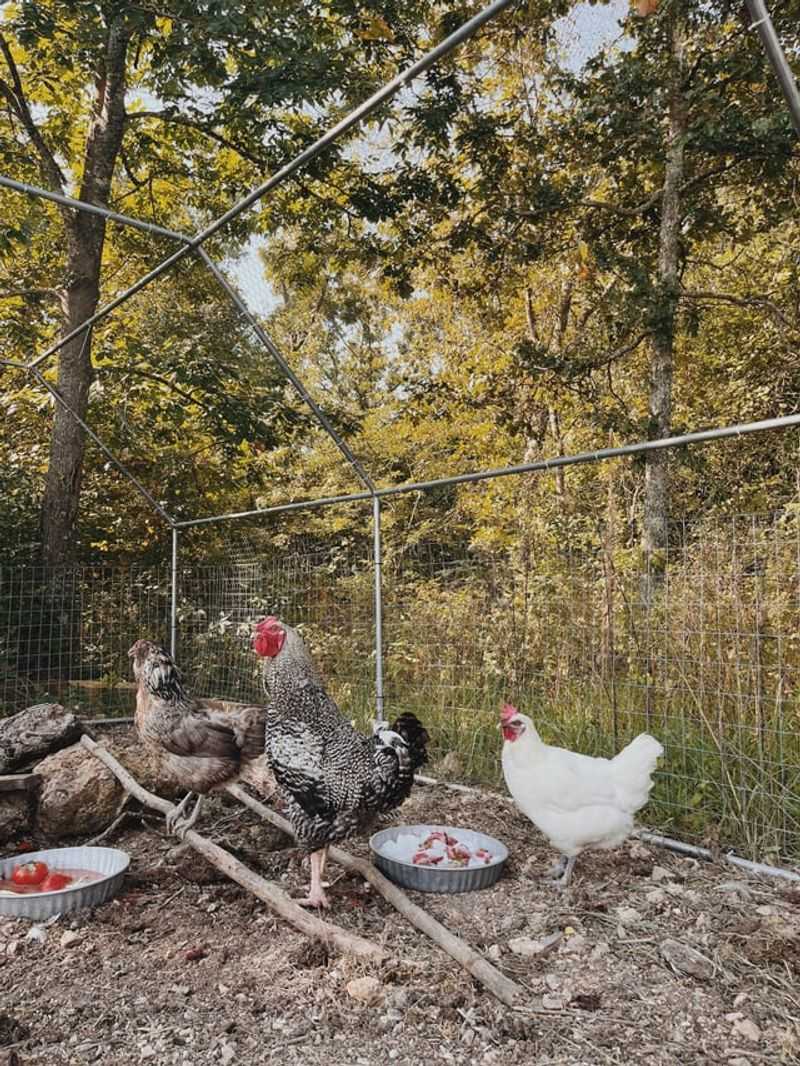Minnesota farmers have found clever ways to make fall leaves work for them. Chickens love pecking through the leaves, and it keeps the yard clean at the same time.
Leaves become bedding, mulch, or even a little treat for feathered friends. It’s a simple trick that keeps gardens and chickens happy.
1. Natural Bedding Material
Across Minnesota farms, dried leaves make excellent bedding inside chicken coops during cold months. Farmers spread thick layers across coop floors, creating soft cushions that absorb moisture and droppings effectively.
Leaves break down slowly, releasing gentle heat through decomposition. This natural warmth helps chickens stay comfortable when temperatures drop below freezing.
Many Minnesota farmers prefer oak and maple leaves because they resist compacting and maintain their structure longer than other varieties.
2. Compost Pile Boosters
Minnesota chicken keepers know that mixing leaves with manure creates gardening gold. Carbon-rich leaves balance nitrogen-heavy droppings, speeding up the composting process remarkably well.
Farmers pile leaves around chicken runs, letting birds scratch and mix materials naturally. Their constant activity aerates the pile while they search for insects and seeds hidden within.
By spring, Minnesota gardeners enjoy rich, dark compost perfect for vegetable gardens and flower beds throughout the growing season.
3. Foraging Entertainment
Bored chickens can develop bad habits like feather pecking, so Minnesota farmers scatter fresh leaves throughout chicken runs for entertainment. Birds spend hours tossing leaves aside, hunting for bugs and treats underneath.
This natural behavior keeps flocks mentally stimulated and physically active during shorter fall days. Farmers often hide mealworms or scratch grains beneath leaf piles to encourage exploration.
Minnesota chickens absolutely love this simple enrichment activity that costs nothing but provides endless amusement.
4. Dust Bath Additions
Did you know chickens bathe in dirt instead of water? Minnesota farmers enhance dust bath areas by mixing crumbled dry leaves with sand and soil.
Leaves add texture and help control parasites naturally. Chickens fluff the mixture through their feathers, cleaning themselves while enjoying the earthy scent.
Farmers across Minnesota report healthier skin and feathers when leaves become part of regular dust bath stations. The leaves also absorb excess moisture, keeping bathing areas dry and inviting.
5. Windbreak Insulation
Harsh Minnesota winters bring bitter winds that chill chicken coops quickly. Clever farmers pile leaves against exterior coop walls, creating natural insulation barriers that block cold drafts effectively.
Leaf piles trap air pockets that prevent heat loss through walls. Some Minnesota keepers stuff leaves into mesh bags, stacking them like sandbags around vulnerable areas.
This free insulation method reduces heating costs while keeping chickens cozy throughout brutal winter months when temperatures plummet.
6. Nesting Box Fillers
Minnesota hens appreciate soft, private spaces for laying eggs. Farmers line nesting boxes with shredded leaves, creating comfortable spots that hens find irresistible.
Leaves cushion eggs, preventing cracks and breaks during laying. They also absorb moisture, keeping eggs cleaner and drier than straw alone.
Many Minnesota chicken keepers mix leaves with pine shavings for optimal nesting material. Hens seem to prefer the natural feel, often arranging leaves carefully before settling in to lay their daily eggs.
7. Pest Deterrent Layers
Certain leaf types naturally repel mites and lice that bother chickens. Minnesota farmers strategically use walnut, eucalyptus, and cedar leaves around coops because insects avoid their strong compounds.
Fresh leaves release oils that create unfriendly environments for parasites. Farmers replace leaves monthly, maintaining protective barriers throughout seasons.
While not replacing proper pest management, Minnesota chicken keepers notice fewer problems when leaves become part of their integrated approach to keeping flocks healthy and comfortable year-round.
8. Run Ground Cover
Muddy chicken runs frustrate Minnesota farmers during rainy fall weather. Spreading thick leaf layers transforms soggy areas into manageable spaces where chickens can roam freely without getting filthy.
Leaves absorb excess water while providing traction on slippery surfaces. Chickens naturally turn and mix leaves, preventing compacted mud from forming underneath.
Throughout Minnesota, farmers appreciate how leaves keep runs cleaner and healthier. When leaves decompose completely, they enrich soil naturally, improving ground quality for future seasons.

